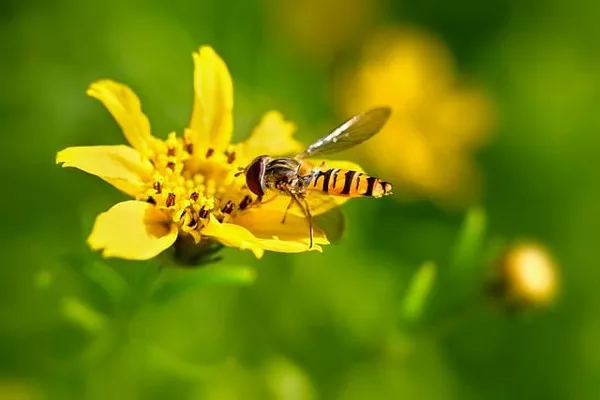Pollination, the transfer of pollen from the male reproductive organs of a flower to the female reproductive organs, is an essential ecological process responsible for the reproduction of flowering plants. Among the myriad of pollinators, bees stand out as one of the most effective and efficient agents of pollination. Their intricate behaviors and specialized anatomical features make them indispensable contributors to the ecosystem. In this article, we delve into the captivating world of bee pollination, exploring the mechanisms by which these industrious insects facilitate the reproduction of countless plant species.
The Role of Bees in Pollination
Bees, belonging to the order Hymenoptera and primarily of the family Apidae, are renowned for their role as pollinators in terrestrial ecosystems. Their importance in pollination cannot be overstated, as they are responsible for pollinating approximately 75% of the world’s flowering plants, including many crops that constitute a significant portion of the global food supply.
Bees engage in pollination as they forage for nectar and pollen to sustain their colonies. During this process, they inadvertently transfer pollen from the anthers of one flower to the stigma of another, thereby facilitating fertilization and subsequent seed and fruit production. This mutualistic relationship between bees and flowering plants has evolved over millions of years, resulting in co-adaptations that optimize the efficiency of pollination.
Anatomy and Adaptations for Pollination
The anatomy of bees is intricately adapted to facilitate the process of pollination. One of the most distinctive features of bees is their specialized body structure, including branched body hairs called setae, which aid in the collection and transport of pollen. Additionally, bees possess specialized structures such as pollen baskets or corbiculae on their hind legs, into which they compact and transport pollen grains back to their colonies.
Furthermore, bees have branched hairs on their bodies known as scopae, which are particularly well-developed on the hind legs of certain species. These scopae serve as efficient pollen-collecting brushes, allowing bees to groom and transfer pollen to specialized structures known as pollen combs or brushes located on their legs.
Foraging Behavior and Pollination Efficiency
The foraging behavior of bees plays a crucial role in their effectiveness as pollinators. Bees exhibit flower constancy, a behavior where they tend to visit flowers of the same species during a foraging trip. This behavior enhances the likelihood of pollen transfer between conspecific flowers, thus increasing pollination efficiency.
Furthermore, bees are highly sensitive to floral cues such as color, shape, scent, and nectar rewards. They use these cues to locate flowers efficiently and maximize their foraging efforts. By visiting flowers in a systematic manner and optimizing their foraging routes, bees ensure thorough pollination across diverse plant populations.
Pollination Mechanisms
Bees employ various mechanisms to facilitate pollination during their foraging activities. One of the primary mechanisms is buzz pollination, also known as sonication. Certain plant species, such as tomatoes, eggplants, and blueberries, have specialized anther structures that require intense vibrations to release pollen. Bees, particularly bumblebees (Bombus spp.), are adept at producing the rapid vibrations necessary for buzz pollination by contracting their flight muscles while holding onto the flower’s anthers. This technique allows bees to efficiently dislodge pollen grains, increasing the likelihood of successful pollination.
Additionally, bees utilize grooming behaviors to transfer pollen from their body hairs to specialized structures for transport. As bees collect pollen from flowers, they groom themselves using their legs and mouthparts, transferring pollen to pollen combs or brushes located on their hind legs or other body parts. This grooming behavior ensures that pollen grains are securely transported back to the hive for feeding larvae or stored as food reserves.
Impact of Bee Decline on Pollination
The decline of bee populations worldwide poses a significant threat to pollination and ecosystem stability. Various factors contribute to bee decline, including habitat loss, pesticide use, pathogens, and climate change. The loss of bee diversity and abundance can have cascading effects on plant populations, disrupting ecosystem dynamics and compromising the reproductive success of numerous plant species, including many food crops.
Addressing the decline of bee populations requires multifaceted approaches, including habitat restoration, reducing pesticide usage, promoting bee-friendly agricultural practices, and raising awareness about the importance of bees in ecosystem functioning. Conservation efforts aimed at protecting bee habitats and supporting native bee populations are essential for ensuring the resilience of pollination networks and safeguarding global biodiversity.
Conclusion
Bees play a pivotal role in pollination, serving as vital contributors to ecosystem functioning and agricultural productivity. Through their specialized anatomy, foraging behaviors, and pollination mechanisms, bees facilitate the reproduction of countless plant species, including many crops essential for human sustenance. Understanding the intricate relationship between bees and flowering plants is crucial for conservation efforts aimed at preserving pollinator diversity and ecosystem resilience. By recognizing the importance of bees in pollination and implementing strategies to protect their populations, we can ensure the continued provision of ecosystem services essential for global food security and biodiversity conservation.


